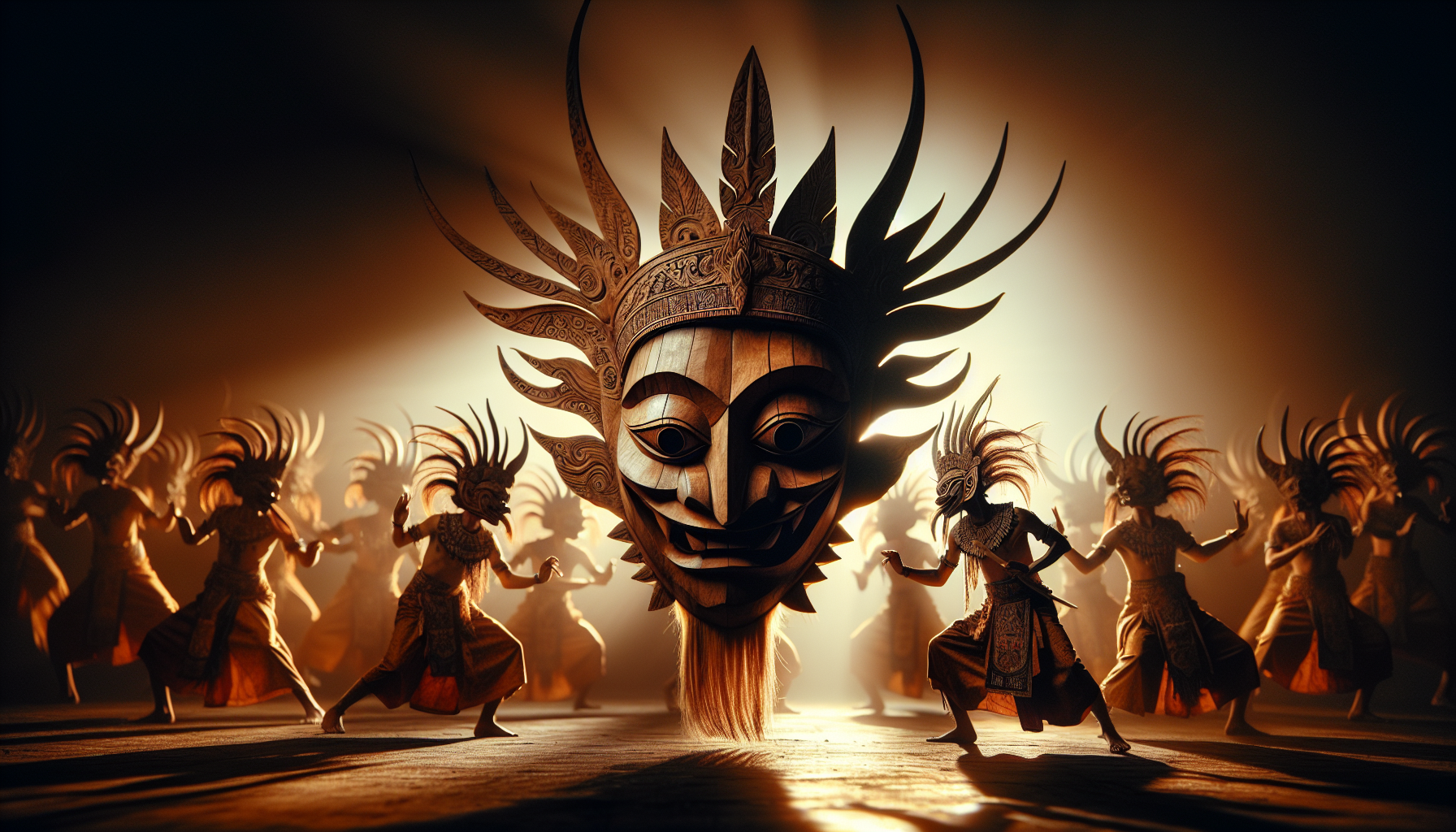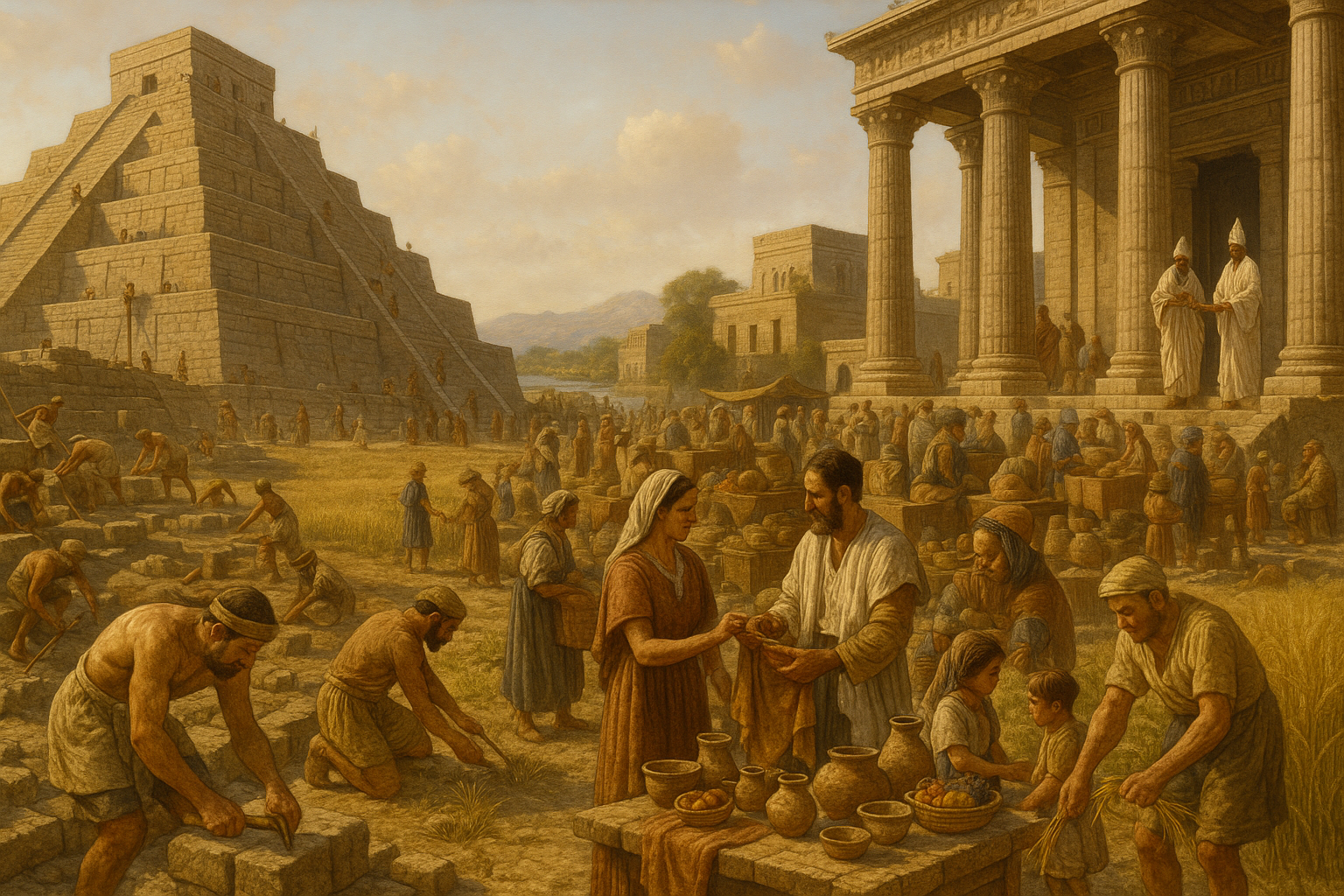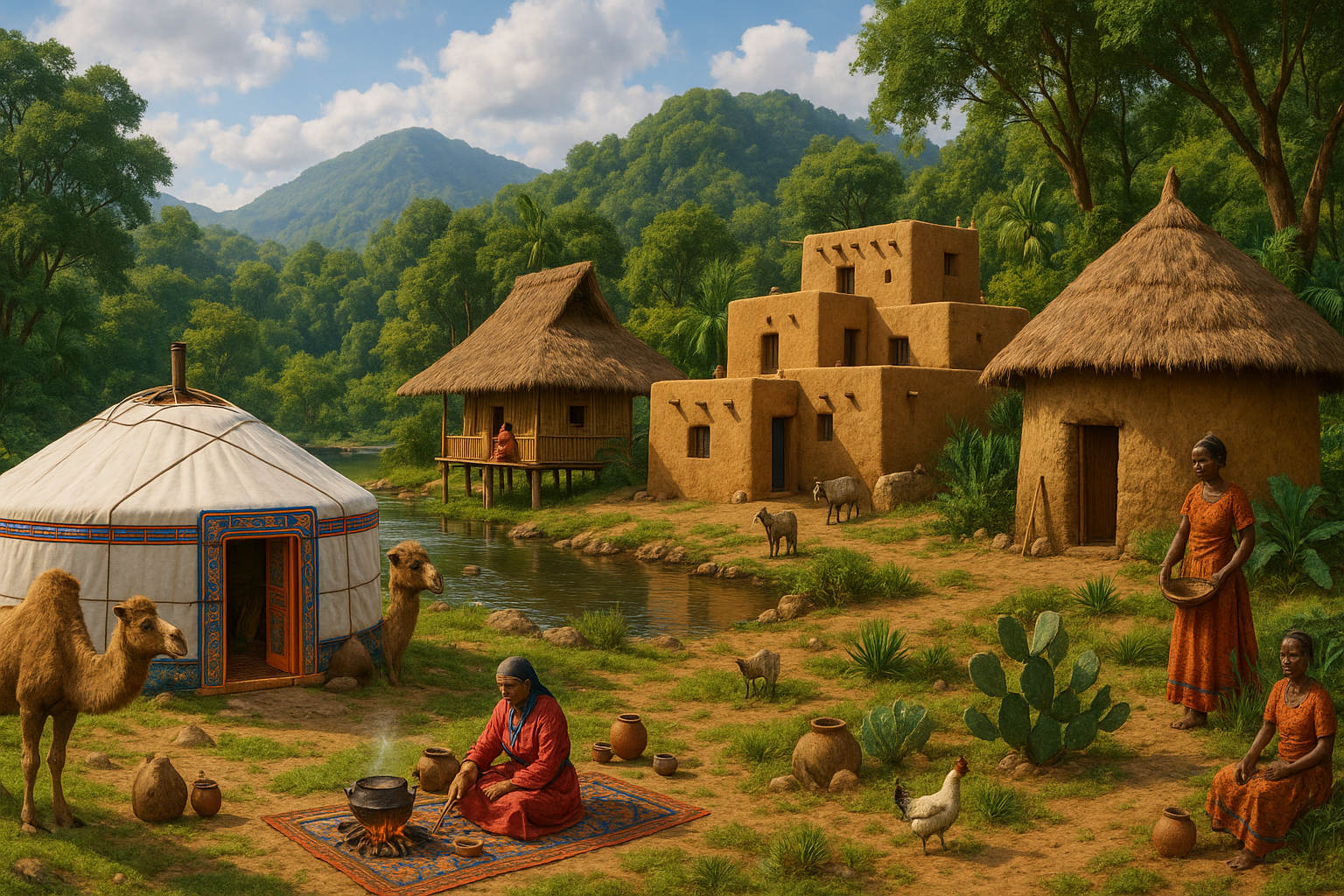In the shadowed corners of history and tradition, a captivating art form continues to thrive, mesmerizing audiences with its profound symbolism and artistic expression. Ceremonial dance with wooden masks is more than just a performance; it is an enchanting journey through the cultural landscapes of diverse communities. This exploration invites us to step into a world where every movement tells a story, every mask conceals and reveals, and every dance is a bridge between the earthly and the spiritual.
Delve into the origins of this mesmerizing tradition as we uncover how different cultures across the globe have embraced the art of masked dance to communicate their deepest beliefs and emotions. From the intricate designs of the masks to the rhythmic patterns of the dances, each element plays a crucial role in preserving the identity and history of a people. Discover the rituals and ceremonies that breathe life into these performances, transforming them into powerful acts of storytelling that transcend time and space.
Join us on a fascinating journey as we unveil the mystique behind these ceremonial dances, exploring the craftsmanship of mask-making, the symbolism woven into each performance, and the way these ancient practices continue to resonate in modern times. This exploration promises to illuminate the enchanting world of wooden masks and the dances that bring them to life, offering insights into the cultural significance and enduring legacy of this mesmerizing art form. 🌟
The Historical Roots of Ceremonial Dance with Wooden Masks
Ceremonial dance with wooden masks has deep roots that stretch back centuries, across various cultures and continents. The masks themselves are often intricately carved and painted, serving not only as artistic expressions but as vessels of spiritual and cultural significance.
In Africa, for example, wooden masks are central to many tribal rituals. The masks are often believed to embody the spirits of ancestors or deities, and dancers wearing them are thought to become conduits for these supernatural entities. These dances are performed during significant events such as initiations, harvest festivals, and funerals. The dances are not merely performances; they are communal experiences that reinforce cultural values and social cohesion.
In Asia, particularly in regions like Bali, wooden masks play a crucial role in religious and cultural ceremonies. The Barong dance, which depicts the battle between good and evil, uses masks to represent various characters and divine beings. The detailed craftsmanship of these masks often tells a story, with each design element holding symbolic meaning.
In the Americas, indigenous tribes have also used wooden masks in their ceremonial dances. The Hopi tribe, for instance, performs the Kachina dance, where the masks represent spiritual beings that bring blessings, rain, and fertility. These dances are performed with the belief that they can influence the natural world and the community’s well-being.
The diversity of these traditions highlights the universal human desire to connect with the spiritual realm through dance and art, underscoring the mystique and enchantment of this practice.
The Artistic Craftsmanship Behind Wooden Masks
The creation of wooden masks for ceremonial dances is a meticulous art form, combining both creativity and tradition. Each mask is a unique piece of art, crafted to represent specific spiritual or cultural figures, and the process often involves various stages of artistry and ritual.
The choice of wood is crucial. Artisans often select specific types of wood for their durability and symbolic meanings. For instance, in many African cultures, the wood used can represent strength or fertility, adding an additional layer of meaning to the mask. The wood is then carved with precision, using traditional tools that have been passed down through generations.
Once the carving is complete, the mask is painted and decorated. The colors and patterns are not random; they are carefully chosen to convey specific messages or to invoke certain spirits. For example, bright colors may be used to depict a benevolent spirit, while darker tones might represent more ominous forces.
The decoration process may also include the addition of materials like feathers, beads, or shells, each carrying its own symbolic weight. These embellishments serve not only aesthetic purposes but also enhance the mask’s power in rituals and dances.
The craftsmanship involved in creating these masks reflects a deep understanding of both artistic techniques and cultural symbolism. Each mask tells a story, capturing the essence of the tradition it represents. It is a testament to the skill and dedication of the artisans who keep these ancient practices alive, preserving their cultural heritage for future generations.
The Symbolism and Meaning of Wooden Masks in Dance
Wooden masks used in ceremonial dances are laden with symbolism and meaning, acting as a bridge between the physical and spiritual worlds. Each mask is crafted to embody specific characters, deities, or ancestral spirits, and the symbolism is often deeply rooted in the cultural beliefs of the community.
In many African cultures, masks are believed to hold spiritual power. They are thought to facilitate communication with ancestors and deities, playing a crucial role in rituals and ceremonies. The symbolism of these masks is often reflected in their designs, with various elements representing different aspects of the spirit world. For example, a mask with large eyes might symbolize wisdom or foresight, while a mask with animal features could represent strength or protection.
In the context of dance, these masks become more than just objects; they become living entities. When worn by dancers, the masks are believed to transform the wearer, allowing them to channel the spirits they represent. This transformation is not just physical but also psychological, as the dancers often undergo a spiritual journey during the performance.
The symbolic meanings of wooden masks are also evident in other cultures. In Balinese dances, masks are used to depict characters from ancient myths and legends, each with its own story and moral lesson. The masks serve as a visual narrative, conveying complex cultural and religious messages to the audience.
The intricate symbolism of wooden masks in dance highlights their importance as cultural artifacts. They are not only works of art but also vehicles of cultural expression, preserving the beliefs and traditions of the communities they come from.
The Role of Ceremonial Dance in Cultural Identity
Ceremonial dance with wooden masks plays a vital role in the expression and preservation of cultural identity. These dances are more than just performances; they are deeply embedded in the social and spiritual fabric of the communities that practice them.
In many indigenous cultures, ceremonial dance is a communal activity that brings people together, reinforcing a shared sense of identity and belonging. The dances often mark significant life events, seasonal changes, or religious observances, serving as a reminder of the community’s history and values. By participating in these dances, individuals connect with their heritage, passing on traditions to future generations.
For example, the use of wooden masks in African tribal dances is not only a display of artistic talent but also a means of preserving oral history. The stories depicted in these dances are often based on ancestral legends and myths, conveying cultural wisdom and moral lessons. Through dance, these narratives are kept alive, ensuring that the community’s cultural heritage is not forgotten.
In modern times, ceremonial dances with wooden masks have also become a way for indigenous communities to assert their cultural identity in the face of globalization. By showcasing these traditional practices, communities can educate others about their history and values, promoting cultural diversity and understanding.
The role of ceremonial dance in cultural identity is multifaceted. It is a celebration of heritage, a means of cultural preservation, and a form of resistance against cultural homogenization. By continuing these traditions, communities ensure that their unique cultural identities remain vibrant and relevant in an ever-changing world.
The Impact of Modern Influences on Traditional Dances
In today’s globalized world, traditional ceremonial dances with wooden masks face new challenges and opportunities due to modern influences. While these dances continue to hold cultural significance, they are also subject to change as they interact with contemporary trends and technologies.
One of the significant impacts of modernity is the increased exposure of these dances to a global audience. Through platforms like social media and international festivals, ceremonial dances can reach people far beyond their original cultural contexts. This exposure can lead to a greater appreciation of cultural diversity, but it also raises concerns about the commercialization and commodification of traditional practices.
As traditional dances gain popularity, there is a risk that they may be altered to suit the tastes of a global audience. This can result in the simplification of complex cultural narratives or the loss of certain symbolic elements. For instance, the intricate meanings behind the wooden masks might be overshadowed by their aesthetic appeal, reducing them to mere decorative objects.
On the other hand, modern influences can also have positive effects. They can provide new platforms for cultural exchange and collaboration, allowing communities to share their traditions and learn from others. Additionally, modern technology can aid in the preservation and documentation of traditional dances, ensuring that they are not lost to future generations.
The impact of modern influences on traditional dances is a complex interplay of challenges and opportunities. While it is essential to preserve the authenticity and cultural significance of these practices, there is also room for adaptation and evolution. By navigating this delicate balance, communities can ensure that their ceremonial dances with wooden masks continue to thrive in the modern world.
Exploring the Future of Ceremonial Dance with Wooden Masks
As we look to the future, the world of ceremonial dance with wooden masks faces both exciting possibilities and significant challenges. The continued relevance of these traditions will depend on how communities adapt to changing social, economic, and environmental conditions.
One potential avenue for the future is the increased use of technology in preserving and promoting these dances. Virtual reality and digital archiving offer new ways to experience and document traditional dances, making them accessible to a global audience. This technology can also be used to educate younger generations, ensuring that the knowledge and skills required for these practices are not lost.
Another important factor is the role of younger generations in keeping these traditions alive. As the custodians of cultural heritage, they have the responsibility to learn and pass on these practices. Engaging young people in cultural activities and incorporating modern elements into traditional dances can make these practices more appealing and relevant to them.
Environmental concerns also play a role in the future of ceremonial dance with wooden masks. The sustainability of resources used in mask-making, such as specific types of wood, is a growing issue. Communities will need to find ways to balance cultural practices with environmental conservation.
The future of ceremonial dance with wooden masks is a dynamic and evolving landscape. By embracing innovation while respecting tradition, communities can ensure that these enchanting practices continue to captivate and inspire future generations.

Conclusion
The world of ceremonial dance with wooden masks continues to mesmerize and inspire, blending rich historical roots with modern influences. Across continents, these dances serve as powerful cultural expressions, embodying spiritual connections and communal identity. Wooden masks, with their intricate designs and symbolic meanings, act as bridges between the tangible and the ethereal, infusing each dance with profound significance. The skilled craftsmanship behind these masks is a testament to the artisans’ dedication, preserving cultural legacies through generations. 🌍
In the face of globalization, ceremonial dances encounter both challenges and opportunities. While the digital era introduces new platforms for sharing these traditions, it also risks diluting their rich narratives. The task of preserving authenticity while embracing innovation is a delicate balance, crucial for maintaining the vibrancy of these practices. Younger generations play a pivotal role in this endeavor, as they carry the torch of tradition into the future, potentially integrating modern elements to enhance relevance.
Environmental considerations add another layer to this dynamic, urging communities to adopt sustainable practices in mask-making. By harmonizing cultural preservation with environmental stewardship, the enchanting world of ceremonial dance with wooden masks can thrive, captivating and connecting people across the globe. 🌟 As we look ahead, these dances remain a beacon of cultural resilience and creativity, ensuring their timeless allure endures.
Toni Santos is a visual storyteller and experimental artisan whose work explores the strange frontiers where science meets art. Fascinated by the forgotten, the obscure, and the wonderfully absurd, Toni brings bizarre scientific experiments to life through provocative visual narratives and handcrafted creations that blur the line between curiosity and discovery.
His journey is rooted in a passion for the eccentric side of science — from electric shocks on cadavers to botany in hostile environments, from Victorian medical oddities to animal behavior gone rogue. Each project Toni undertakes sheds light on real (and sometimes questionable) scientific ventures that push the boundaries of human understanding.
With a background in visual design and hands-on craftsmanship, Toni blends artistic precision with conceptual boldness. His creations aren’t just decorative — they provoke, disturb, and invite the viewer to reconsider what counts as science, progress, or even sanity. Often inspired by true experiments — like galvanic resurrection, psychological endurance tests, or 19th-century pseudo-science rituals — Toni’s work reanimates these bizarre chapters of history with aesthetic intrigue and critical reflection.
As the creative force behind Vizovex, Toni invites you to explore a world where the strange becomes symbolic, the grotesque becomes beautiful, and every experiment tells a story worth unearthing.
His work pays tribute to:
The brilliant madness of forgotten experiments
The symbolic power of science at the edge of reason
The beauty in questioning what we think we know
Whether you’re a curious mind, a lover of scientific history, or simply drawn to the uncanny, Toni welcomes you to explore a realm where aesthetics and absurdity collide — one experiment, one mystery, one creation at a time.





